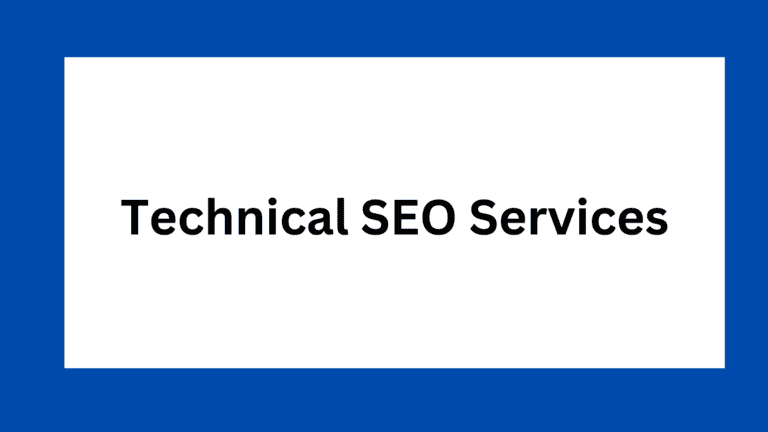With over 5.6 billion Google searches happening each day, the online space is no less than a gold mine. However, as they say, with great opportunities come great challenges. In the early days of the digital universe, ranking on search engines was a pretty straightforward game – sprinkle your content with relevant keywords, and voila, you could see your site topping the SERPs. But as Bob Dylan puts it, “the times they are a-changin’.”
Semantic SEO isn’t just a buzzword. It’s about understanding the intent behind a user’s search rather than just the words they’re typing into the search bar. Google and other search engines have grown more sophisticated over the years.
They are moving towards understanding searcher intent and providing results that meet that intent, not just matches to the specific words used in a query.
The Evolution from Traditional SEO to Semantic SEO
It’s nothing short of fascinating how the world of SEO has evolved in the last decade. If we rewind to the early 2000s, you’d see that SEO was a game almost entirely ruled by keywords. Back then, search engines like Google primarily focused on the presence of exact keywords in web content to determine its relevance to a search query. It wasn’t unusual to see web pages stuffed with keywords, sometimes to the point of being incoherent to a human reader. But hey, as long as it pleased the search engine algorithms, it worked!
Fast forward to today, and the landscape has drastically changed. The birth of Semantic SEO marks the transition from a keyword-focused approach to a more nuanced, context-oriented method. Semantic SEO operates not just on the basis of mere words but on the context, meaning, and intent that those words represent. It seeks to understand the ‘why’ behind a search query rather than just the ‘what’.
This transition is not just a shift in strategy, but a reflection of the tremendous strides in technology. The advent of Artificial Intelligence (AI) and Natural Language Processing (NLP) has revolutionized the way search engines interpret queries. These technologies enable search engines to understand search queries in the same way a human would – by considering the context, interpreting the intent, and even accounting for nuances in language.
This evolution has had profound implications on how content is created and optimized for search engines. In the era of Semantic SEO, content must not only contain relevant keywords, but it should also be contextually aligned with the search intent, and semantically linked to related topics. This brings an era of richer, more informative content that benefits both the user and the content creator.
Decoding Semantic SEO
If you’re familiar with the world of SEO, you’ve likely heard the term Semantic SEO buzzing around the industry lately. But what exactly does it mean, and why should you, as a content marketer, care?
Semantic SEO is an approach that focuses on optimizing content around meaning and context, rather than specific keywords. It goes beyond the literal interpretation of words and attempts to understand the intent behind a search query.
At the heart of Semantic SEO are context, entities, and concepts. These elements together contribute to a deeper, more thorough understanding of a query’s purpose. Entities are things, ideas, or objects that are uniquely identifiable. For example, ‘Apple’ is an entity that could refer to a fruit, a technology company, or a music label, depending on the context.
Concepts are similar to entities but are more abstract and can represent a group of entities or ideas. A concept could be something like ‘marketing strategies’, which could encompass a variety of entities like ‘content marketing’, ‘social media marketing’, ‘SEO’, and so on.
Understanding the context is crucial in Semantic SEO because the same word can have different meanings based on its usage. For instance, consider the word ‘jaguar’. It could represent an animal in the context of wildlife or a car brand in the context of automobiles. This is where the Google context vectors patent comes into play, showcasing the complexity of understanding words in various contexts.
Don’t worry, though; you’re not alone on this journey. In the next section, we’ll talk about how Semantic SEO influences the content creation process, and the positive impacts it can bring to your content marketing strategy.
The Role and Impact of Semantic SEO in Content Marketing
Semantic SEO has fundamentally reshaped the content creation process. It requires content marketers to shift their mindset from a keyword-focused approach to a topic-centric approach. This involves considering the broader context, related entities, and the user’s intent when crafting content.
The benefits of implementing Semantic SEO are immense. For example, a design-focused website, freeyork.org, saw a significant improvement in its metrics within three months of implementing Semantic SEO. They saw an 18.47% increase in organic traffic, a 2.4X increase in page views, and a 13.75% increase in session duration.
However, while machine learning and AI technologies have propelled the evolution of Semantic SEO, the importance of human creativity and understanding in content creation remains paramount. Machines can analyze and identify patterns, but they still lack the human touch—the ability to understand the nuances of language, craft compelling narratives, and engage readers on an emotional level.
This doesn’t mean we should view technology as a threat. Instead, it’s a tool that aids in creating more meaningful and effective content. Semantic SEO encourages us to create content that truly resonates with readers, going beyond simple keyword matching to create in-depth, informative content that satisfies the reader’s intent.
So, are you ready to start incorporating Semantic SEO into your content strategy?
The rest of this article will guide you through the process, from understanding search intent to optimizing your content with semantic techniques. Stay with us for the journey!
How to Implement Semantic SEO: A Step-by-Step Guide
Semantic SEO may seem like a complex process, but don’t fret. Here’s a step-by-step guide to implementing it in your content strategy, making your content more relatable, and helping it resonate with both search engines and your audience.
- Understanding Search Intent: The first step towards semantic SEO is to understand the intent behind the search queries your target audience uses. Are they looking for information, do they want to make a purchase, or are they seeking a specific website? By understanding the ‘why’ behind their search, you can create content that directly answers their queries.
- Identifying Relevant Entities and Topics: Once you’ve nailed down the search intent, identify the entities and topics related to your content. For example, if you’re writing about ‘content marketing’, related entities could be ‘SEO’, ‘social media marketing’, ‘blogging’, and so on. Try to weave these entities into your content in a natural and meaningful way.
- Optimizing Content: Next, get backlinks from content around these entities and topics. Use them strategically throughout your content, ensuring they add value and enhance understanding. Also, incorporate internal links to relevant content on your site to create a comprehensive knowledge network.
- Adding Structured Data: By adding schema markup or structured data to your website, you can provide search engines with explicit clues about the meaning of your content. This makes it easier for search engines to understand and index your content accurately.
- Ensuring Traditional SEO Practices: While focusing on semantic SEO, don’t forget the traditional SEO practices. Ensure your title tags, headings, alt text for images, etc., are optimized and relevant to your content.
Semantic SEO doesn’t replace traditional SEO; it complements it, helping you create content that’s more understandable, meaningful, and user-centric.
The Future of Web and SEO: Semantic Search
Tim Berners-Lee, the creator of the World Wide Web, envisioned a Semantic Web—an extension of the current web, where information is given well-defined meaning, enabling better cooperation between computers and humans. Semantic SEO aligns perfectly with this vision, emphasizing the importance of understanding and interpreting the context and intent behind information.
A key component of this semantic future is the Knowledge Graph, a knowledge base used by Google to enhance its search engine’s results with information gathered from a variety of sources. This information is used to understand the connections and relationships between entities, further improving the search experience.
As we move towards a more semantic web, structured data becomes even more crucial. It allows search engines to better understand, categorize, and display your content, providing users with more relevant and rich results.
The future of SEO and the web is undeniably semantic. It’s not just about the words on a page, but the meaning and context behind those words. And by understanding and implementing Semantic SEO, you can ensure that your content is ready for this exciting future.
Topic Maps: A Crucial Component of Semantic SEO
Now, let’s talk about topic maps. Imagine them as intricate webs, weaving together a myriad of related concepts, entities, and ideas. Much like a real map that guides you through an unknown terrain, topic maps guide your content creation process in the context of Semantic SEO.
A topic map is a visualization of interrelated concepts within a particular topic. It provides a snapshot of the entities or ideas you have covered on your website and illuminates new opportunities for content creation by identifying areas where you could provide additional insight.
These maps are essential because they guide us in creating comprehensive, interrelated content that naturally satisfies search engine algorithms’ need for context and relevance. In essence, they help shape our content’s architecture, ensuring we cover all necessary aspects of a topic, thus providing a better user experience.
But there’s more.
A rich and structured content model—another crucial aspect of Semantic SEO—directly complements topic maps. It organizes your content and its underlying relationships in a way that search engines can understand. By highlighting these connections, search engines can better understand your content’s context, making you more visible to users who meet the search intent related to your business.
The richer your content model in structured data, the more likely you’ll attract users genuinely interested in what you offer. With tools like WordLift, you can highlight only the facets of your business that matter most to users, creating an increasingly specific and refined Knowledge Graph. Essentially, you’re shaping your company’s online identity and boosting your visibility on the web.
Conclusion: The Role of Semantic SEO in Successful Content Marketing
As we navigate the evolving landscape of digital marketing, Semantic SEO has emerged as a pivotal strategy. It’s no longer about peppering content with target keywords; it’s about providing context, understanding searcher intent, and delivering in-depth, meaningful content. Embracing Semantic SEO isn’t just a futuristic idea—it’s a necessity now. As content marketers, we must adapt and grow with these advancements, leveraging Semantic SEO to enhance our content’s relevance and our brand’s visibility. By doing so, we set ourselves up for success in an ever-competitive digital world, ensuring our content resonates with both search engines and our audience.
What is an example of semantic SEO?
Semantic SEO, also known as structured data SEO, focuses on optimizing web content to make it more understandable to search engines. Some of its examples are Adding Schema Markup, Rich Snippets, Contextual Internal Linking, Knowledge Graph Optimization etc.
What is semantic search SEO?
Semantic search SEO refers to the practice of optimizing web content to align with the principles of semantic search. Semantic search is an advanced search technique that aims to understand the context, intent, and meaning behind a user’s search query rather than solely focusing on individual keywords.
What is the difference between SEO and semantic SEO?
Traditional SEO places significant emphasis on keyword research and optimization. It involves identifying and targeting specific keywords that have high search volume and relevance to the website’s content. In contrast, semantic SEO takes a broader approach by analyzing the user’s search intent and developing content that comprehensively addresses the topic.
What is the difference between semantic search and normal search?
Semantic search and normal search refer to different approaches and techniques used to retrieve information from a database or search engine.
Why is semantic search better?
Semantic search is often considered better than traditional keyword-based search because it aims to understand the meaning behind the query and the content being searched, rather than relying solely on matching keywords.









